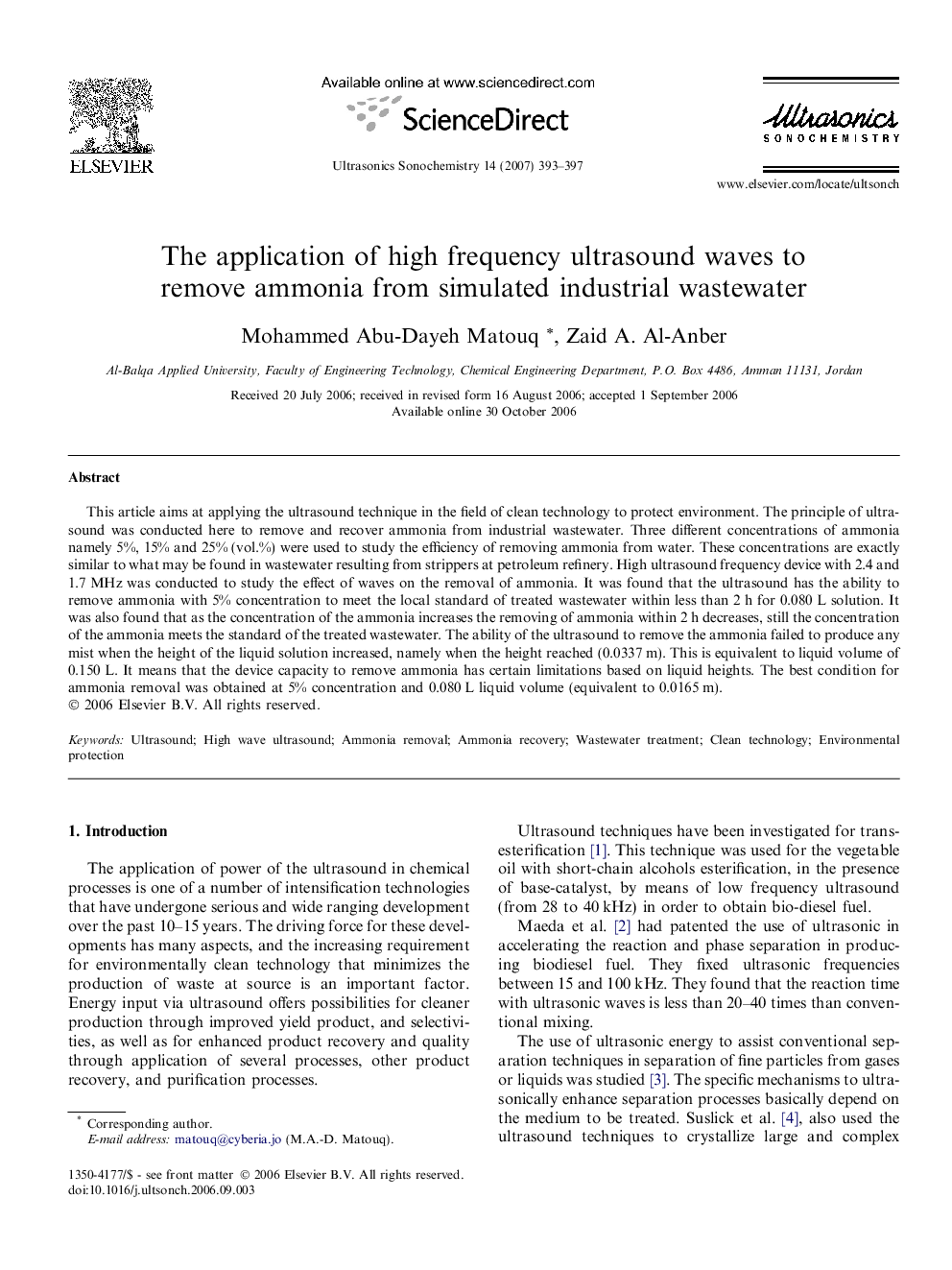| Article ID | Journal | Published Year | Pages | File Type |
|---|---|---|---|---|
| 1266683 | Ultrasonics Sonochemistry | 2007 | 5 Pages |
This article aims at applying the ultrasound technique in the field of clean technology to protect environment. The principle of ultrasound was conducted here to remove and recover ammonia from industrial wastewater. Three different concentrations of ammonia namely 5%, 15% and 25% (vol.%) were used to study the efficiency of removing ammonia from water. These concentrations are exactly similar to what may be found in wastewater resulting from strippers at petroleum refinery. High ultrasound frequency device with 2.4 and 1.7 MHz was conducted to study the effect of waves on the removal of ammonia. It was found that the ultrasound has the ability to remove ammonia with 5% concentration to meet the local standard of treated wastewater within less than 2 h for 0.080 L solution. It was also found that as the concentration of the ammonia increases the removing of ammonia within 2 h decreases, still the concentration of the ammonia meets the standard of the treated wastewater. The ability of the ultrasound to remove the ammonia failed to produce any mist when the height of the liquid solution increased, namely when the height reached (0.0337 m). This is equivalent to liquid volume of 0.150 L. It means that the device capacity to remove ammonia has certain limitations based on liquid heights. The best condition for ammonia removal was obtained at 5% concentration and 0.080 L liquid volume (equivalent to 0.0165 m).
